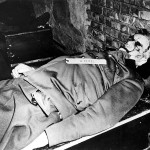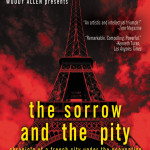
Early on the morning of 16 October 1946, Wilhelm Keitel walked up 13 steps of the scaffold, had the rope adjusted around his neck, and dropped 6 feet through the trap door. The Nuremburg Court’s verdict of death by hanging was carried out on one of the major architects and perpetrators of the Nazi war machine.
Today, we tend to see World War II through the lens of the History Channel framed by the events of Pearl Harbor, D-Day, and the Holocaust. Rarely do we dig below the surface and become exposed to the sheer brutality, horrors, and inhuman behavior of the Nazi regime and its criminals (yes, these were criminals, thugs, lowlife, misfits, and degenerates). Researching my new book Where Did They Put the Gestapo Headquarters? A Walking Tour of Nazi Occupied Paris has brought many of these barbaric events and behaviors to my attention. I have trouble comprehending so many horrific stories as I scratch the surface. One of these stories is Nacht und Nebel. Read More Night and Fog

